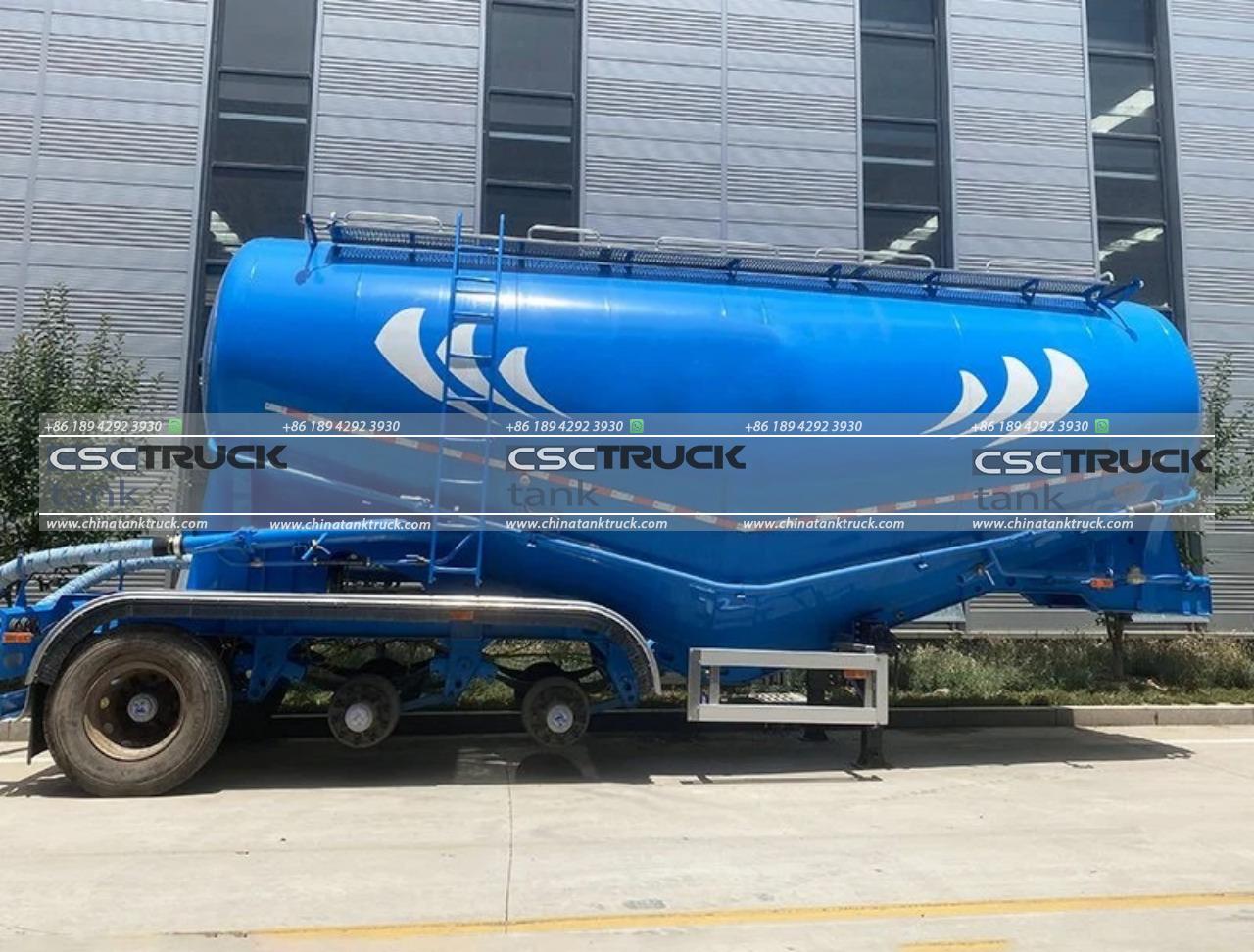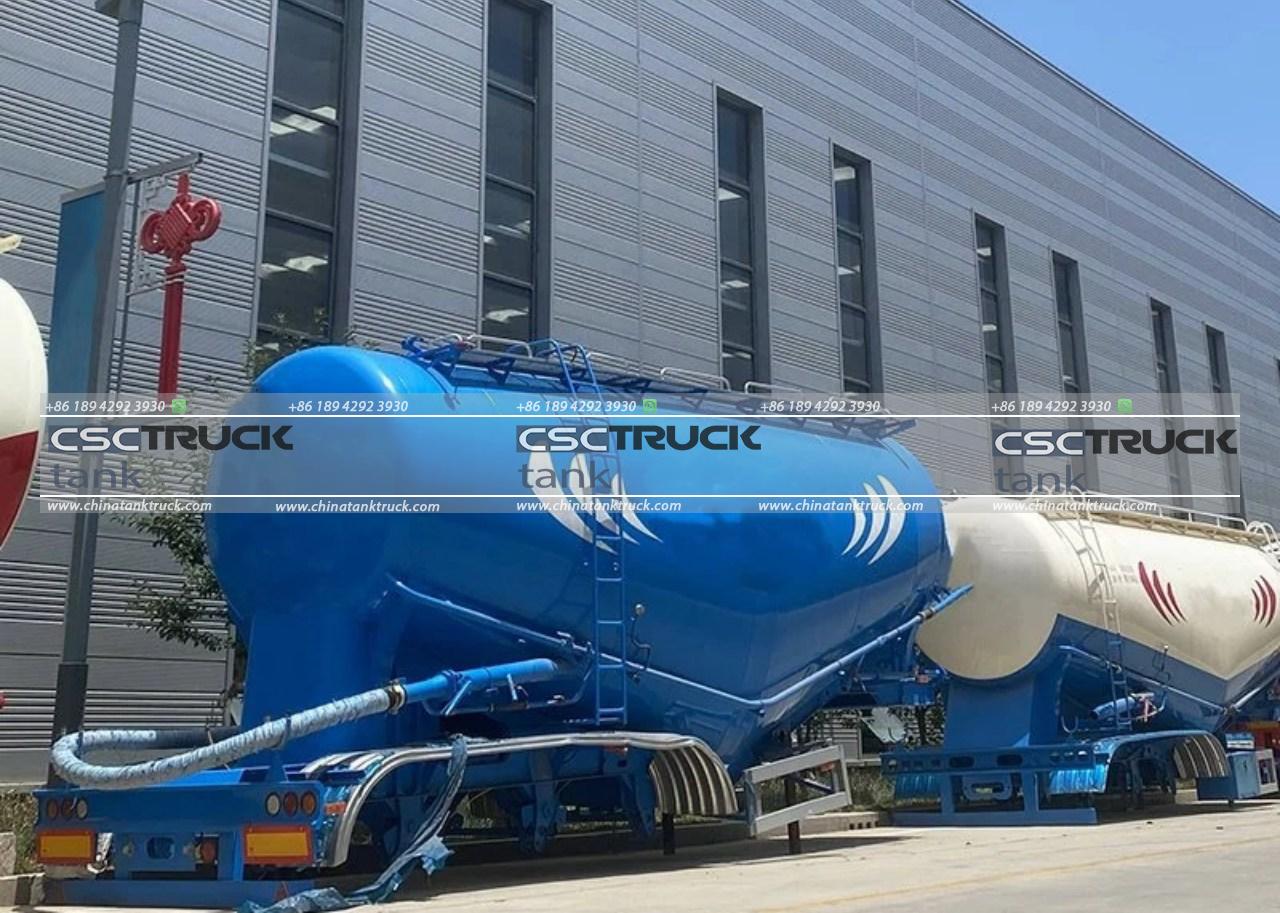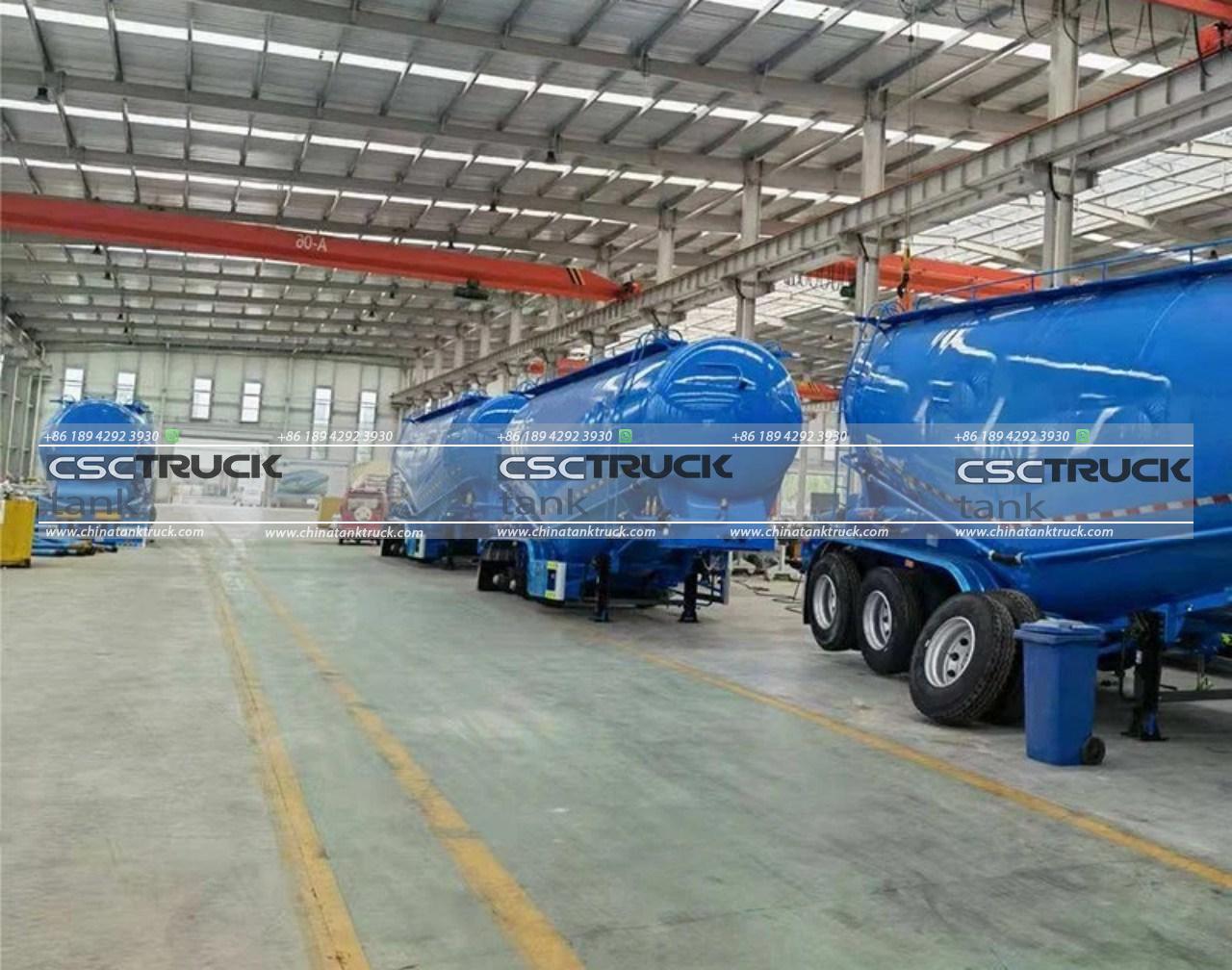Pneumatic trailers, also known as dry bulk tankers, are widely used in industries that require the transport of dry, granular materials such as cement, sand, flour, and various chemicals. They use pressurized air to offload their contents into storage silos or other containers. But what if you need to transport a liquid? The question arises: Can you haul liquid in a pneumatic trailer? The simple answer is NO—pneumatic trailers are specifically designed for the transportation of dry bulk materials, and their structural and functional characteristics make them unsuitable for liquid hauling. To understand why, it’s essential to explore the design, mechanics, and purpose of pneumatic trailers and compare them with trailers built for liquid transport.
Understanding the Design of Pneumatic Trailers
Pneumatic trailers are cylindrical, typically made from aluminum or steel, and divided into separate compartments to carry dry bulk materials. These trailers are equipped with air compressors that allow them to create a pressure differential between the inside and outside of the tank. This differential is what enables the material to be discharged without requiring tilting or external assistance.
Key components of a pneumatic trailer include:
– Pressurized Air System: Used to push dry materials out of the trailer.
– Manhole Covers: Located at the top for loading materials.
– Cone-shaped hoppers: Located at the bottom of the trailer to facilitate material discharge.
– Blower Systems: For pressurizing the tank and enabling offloading.
This design is highly specialized and optimized for dry bulk transport. The pressurization system is tailored to maintaining the flow of particles, not the handling of liquids. The dry materials flow with the help of gravity, and the air pressure propels them through hoses into silos or other containers.

Why Pneumatic Trailers Are Unsuitable for Liquids
Now, let’s break down why pneumatic trailers are not ideal for transporting liquids.
1. Design Purpose:
Pneumatic trailers are built for dry bulk materials like sand, cement, and plastic pellets. The cone-shaped hoppers at the base help with gravity-fed unloading. If you attempt to load a liquid into these trailers, the sloping design will cause uneven distribution of the liquid, and since they’re not sealed against liquid leaks, there would be a significant risk of spillage. Moreover, liquids don’t require air pressure for unloading; they require pumps, and pneumatic trailers don’t have the necessary pumps or plumbing systems.
2. Structural Integrity:
Liquids behave differently from dry bulk materials, especially when it comes to transportation. They are more likely to shift and slosh around during transit. Pneumatic trailers are not built to handle the dynamic movement of liquids. The compartments are designed for materials that stay relatively stable during transport. When hauling liquids, the constant movement could create instability, making it unsafe to transport them using this equipment.
3. Weight Distribution:
Pneumatic trailers rely on the proper weight distribution of dry goods, where the material is evenly spread across compartments. Liquids, however, move more freely, and without proper baffling systems (used in liquid tankers to minimize sloshing), the weight could shift dramatically during transit. This would create a safety hazard, increasing the risk of accidents, especially during turns or sudden stops.
4. Leakage:
Pneumatic trailers are not designed to be watertight. The valves, seals, and manhole covers are built to keep air in, not liquids. If a liquid were to be loaded into one of these trailers, there would be a high risk of leaks, which could damage the trailer and create a hazardous situation on the road, depending on the type of liquid being transported.
Types of Trailers Designed for Liquid Transport
For those who need to haul liquid, there are specific trailers designed to handle the unique properties of liquids. These include tankers that are reinforced to withstand the challenges that liquids present during transportation.
1. Liquid Tankers
Liquid tankers are built with smooth, cylindrical tanks and feature internal baffling to reduce the movement of the liquid inside. This helps to maintain stability during transit. Liquid tankers come equipped with pumps for unloading the liquid through hoses, in contrast to pneumatic trailers, which rely on pressurized air. The tank is often sealed tightly to prevent leaks.
2. Vacuum Tankers
These tankers are commonly used to transport liquid waste or hazardous liquids. Vacuum tankers utilize suction to load and unload liquids and are designed with safety features to handle potentially dangerous or toxic substances.
3. Food-Grade Tankers
For transporting edible liquids like milk or juice, food-grade tankers are the best choice. These are constructed using stainless steel to prevent contamination and maintain the quality of the food product. They are also equipped with specialized cleaning systems to meet stringent health and safety regulations.

Risks and Consequences of Using Pneumatic Trailers for Liquid Transport
Attempting to haul liquids in a pneumatic trailer poses numerous risks and can have severe consequences:
1. Safety Hazards:
The improper containment and weight distribution of liquid in a pneumatic trailer can make it difficult to control the vehicle. This increases the likelihood of accidents, particularly during sharp turns or sudden stops.
2. Damage to Equipment:
Pneumatic trailers are not designed to hold or transport liquids, and doing so could damage seals, valves, and other parts of the trailer. Repairs could be costly, and in some cases, the trailer might be permanently damaged.
3. Environmental Risks:
Liquid spills due to leaks or accidents can be hazardous to the environment, particularly if the liquid is a chemical or hazardous substance. This could result in fines, clean-up costs, and potential damage to a company’s reputation.
4. Legal Implications:
Transporting liquids in equipment not meant for that purpose could result in violations of transportation regulations. This could lead to fines or other legal consequences, especially if the transport involves hazardous liquids or if an accident occurs.
Conclusion: Use the Right Trailer for the Job
In summary, while pneumatic trailers are highly efficient for transporting dry bulk materials, they are not suitable for hauling liquids. Liquids require a completely different set of features and safety measures that pneumatic trailers do not offer, such as watertight seals, internal baffling, and pumps for unloading.
For safe and efficient liquid transport, it’s essential to use trailers designed specifically for liquids, whether that’s a liquid tanker, vacuum tanker, or food-grade tanker. Using the right equipment not only ensures the safety of the product but also helps maintain road safety and reduces environmental risks. Always choose the appropriate trailer for the type of material you are hauling to avoid costly mistakes and potential hazards.


